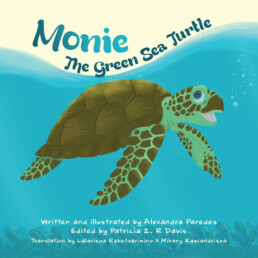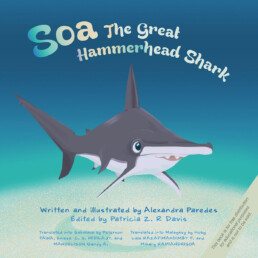
I am an active member of the LMMA in Ambolobozokely and I also play the role of advisor to guide and explain the rules to the community members.By attending the various meetings organized by C3 in our village, I was convinced by the activities of their project and I decided to join. Also, I noticed that since C3's interventions, people are beginning to change their behavior and take more responsibility for the protection of the resources, for example, they participate in restoration activities or request for authorization to cut some wood in the forests (for needs).
Anjonjara Mora
Community Member and Advisor
About
C3 Madagascar started in 2009 in the far north of Madagascar, based in the town of Antsiranana.
The challenges faced in the north are similar to those faced by many remote tropical coastal regions today; deforestation, lack of reliable water and electricity supply, overfishing, exploitation of endangered species for international trade, coral bleaching and increasing frequency of storm surges and coastal erosion. C3 Madagascar partnered with the communities of Nosy Hara Marine Park to build awareness, capacity and inspiration for environmental stewardship. With most community members in our target region living on less than $1 per day, we first needed to address the drivers of poverty and environmental destruction.
Based on consultations, research and feasibility studies, we identified key healthcare, education and capacity building needs of each community and delivered services such as a visiting doctor, new school furniture and books and good governance, organisational capacity building and business training to local association so that people could have their basic needs addressed. Communities are now motivated to commit to Park management and monitoring along with the government agency, Madagascar National Parks, facilitated by C3. In the last two years fisheries infractions have dropped by 90% and there have been no dugong or sea turtle mortalities. Businesses including ecotourism and duck farming are flourishing today and also help deflect pressure off coral reefs and seagrasses.
Sadly, most conservation NGOs in Madagascar come in from outside with their own prescriptive approaches, which unfortunately usually fail long-term because of lack of local leadership and understanding the local context and complex and diverse cultures. We are proud to be locally-led and locally-governed and yet have the capacity to manage donor funds as any foreign NGO. We were declared Project Champions when compared to other marine NGOs in 2018 by UNDP Global Environment Facility, our successful model for community environmental stewardship was featured in a UNEP film in 2019 and our Junior Ecoguard network has received several international accolades.

Commitment
C3 Madagascar is truly community centred as its name implies. We’re not a NGO which comes and goes to rural communities in order to implement top-down projects conceived in costly offices in cities by development personnel. We’re grassroots, located in the community and all of our ideas come from the community and complement the country’s overarching sustainable development goals.
We have developed successful environmental stewardship models with proven impact. Our job is to adapt, replicate and scale up what we do to reach more and more communities and areas of critical biological importance.
We only promise to deliver effective, sustainable and impactful conservation and development at the best possible price. The reason we can deliver at much lower cost than most NGOs is that we are locally-based, locally-run and have hundreds of community volunteers, well-researched suppliers and a policy of zero or minimal waste.
The international community has to admit that conservation has not been successful to date, we are still losing hundreds of species and swathes of habitat each year. With limited funds and time, we must shift our paradigm away from neo-colonial conservation approaches and waiting for data to inform decisions, instead we need to capacitate communities to manage and monitor key biodiversity areas with their own drive and commitment before it is too late.
It is also time for donors to take a good hard look at value for money when it comes to future conservation investments and move away from an approach which has historically supported short-lived outcomes with high administrative cost and unfortunately led to corruption and external dependence of local institutions.
Achievements
C3 Madagascar has:
Designed marine conservation modules for the national curriculum;
Facilitated community creation of Locally Managed Marine Areas (LMMAs) in 3 key biodiversity areas; and
Created the national environmental leaders network, TANOMAFI, which coordinates all approaches to youth engagement in conservation and sharing innovative pedagogic resources.
22
hectares of mangrove area restored
100
TANOMAFI members
116
schools impacted
385
fishers trained in monitoring and sustainably managing small-scale fisheries
500
feet of reforestation planted with children
7,000
fishing communities impacted (estimated)
26,750
mangrove propagules planted
30,000
school children with increased knowledge on marine biodiversity and climate change across the north of Madagascar
Over 30,000
people impacted
300,000
hectares of marine area impacted
—
Contact
C3 MadagascarLot II Y 30Bis ABA Andrefan'Antanimora,Antananarivo 101, Madagascar
C3 Madagascar (CONSERVATION CENTREE SUR LA COMMUNAUTE C3 MADAGASCAR), in accordance with Article No. 5 of Ordinance No. 60133, is registered as a non-profit organization in Madagascar under the Direction of the Territorial Administration of Antananarivo with Registration No. 1206/14-MID/SG/DGAT/DIRAT/ANT/ASS.













